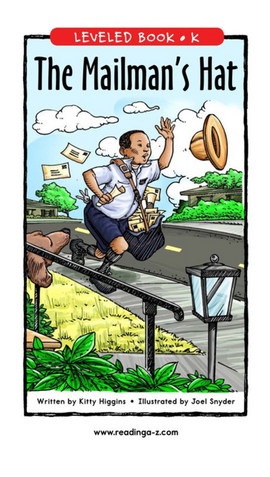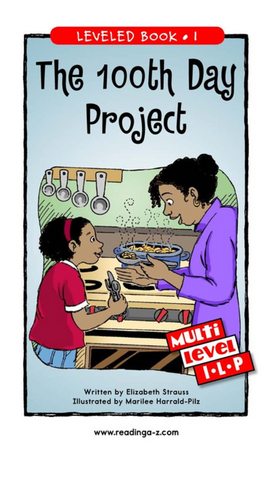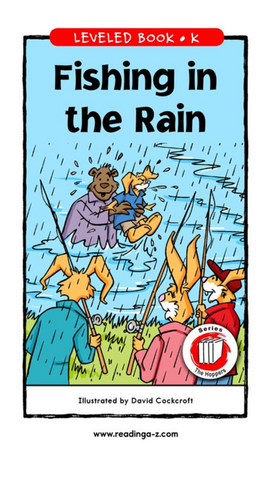Ages: 3-12
1 hour - 1.5 hours*
10 Levels
Max 6/class*
Compatible with BE Reading Pen and BE Reading Buddy iOS and Android app.
Click here to learn more.


COURSE DESCRIPTION
English Ladder is an integrated skills English language programme specifically designed for the needs of Hong Kong children. The skills covered include reading, comprehension, writing, grammar, speaking and listening. For Steps 1-3 (kindergarten years), Dolce sight words are built into the programme. Students will progressively build up their sight words each lesson to help improve reading fluency. Upon mastering the sight words, students should be able to read about 75% of age-appropriate texts. Step 4 is a bridging class for those students who needs a little more help before they reach the Step 5 (primary 1) level.
Correlation
Our materials are expertly developed in accordance with the needs of the student. Our reading and comprehension are aligned to international standards (Lexile, Fountas & Pinnel, DRA and Reading Recovery). Our grammar syllabus and writing forms (poem, reports, storytelling, etc.) are aligned to local standards.
Course Structure
There are 10 Steps in the English Ladder programme. Each Step consists of 3 modules with 15 lessons per module. Each module will have a review that will revise the entire module, and this is followed by an assessment that would serve to grade each student's performance. We understand that all students have a lot of homework and stress from school, so we don't require students to revise or prepare for the assessment at home. We will do all preparations for the lesson before the assessment. Following the assessment, there will be a progress report and a certificate of completion issued to the student.
Unlike other centres, we don't separate the teachers from the parents. On the contrary, we encourage our teachers to build a close relationship with all their students' parents to better understand their students' issues and needs. All of our teachers are available (most of the time immediately after the lesson) and are more than happy to update the parents on their child's progress.
Teaching philosophy
Our teachers are carefully selected, trained and certified to deliver our programmes, including RWI by Ruth Miskin. We use passion, positive reinforcement (praise the good to influence the naughty rather than scolding the naughty), encouragement, and energy to engage our students and promote English learning actively.
Assessment & Evaluation
We place students into appropriate levels based on ability rather than age. We believe this will ensure each student will be placed at the best level to succeed. Therefore, all students are required to complete a free assessment that will determine which Step is the most suitable. The whole process of assessment and briefing takes between 30 – 40 minutes. During the briefing, the teacher will debrief the assessment and fully explain the structure of our programmes. You will see for yourself the curriculum for the assigned level and that of the next, thus enabling you to see the effectiveness of our progressive programme.
Quality Assurance
Our centre managers meet with their teachers every week in what is known as a Teachers' Weekly Meeting. During this meeting, our teachers are expected to account for every one of his/hers students. This systematic method of managing teachers enables us to monitor every student and ensure every student is receiving due attention. This enables us to identify issues early on and thus plot a course of action to resolve these issues.
A powerful synthetic phonics based English literacy and language programme. The programme is integrated with the phonics programme, RWI by Ruth Miskin. By the end of K3, we expect children to be able to read and write sentences independently using their phonics skill.

All teachers are trained, certified to deliver the programme. All teachers have undergone specialist RWI phonics training.
We grow children's vocab bank with the use of picture-word cards. We systematically introduce the 220 Dolch sight words to children. These are the most common words in the English language, representing 50-75% of most children's text.

TECHNOLOGY
Our texbooks and story books are SMART. They are compatible with our BE Reading Pen and companion iOS and Android app. These edtech tools help enhance learning at the centre and at home.

PREDICTABLE
LEARNING
OUTCOME
Our programme leads to predictable learning outcomes in children. A child starting from K1 will typically reaches P1 English language competency before they finish K3, thus empowering them with a significant advantage when entering P1.
4 SKILLS
Our programme improves your child's reading, writing, listening and speaking skills using a systematic curriculum that progressively increases in difficulty as the student progresses from module to module and step to step.
KINDERGARTEN
Learn English with
Babington
Bear & Friends

FRAMEWORK
FOR READING
Not just books...but Lexile ® certified books
Our kindergarten level storybooks are certified by the Lexile ® Framework for Reading.
Lexile® measures are the gold standard for measuring reading development and comprehension. It is a scientific approach to measuring both reading ability and the text complexity of reading materials on the same developmental scale.
Over 35 million students and 100 million books, articles and websites have received Lexile reading and text measures.
Phonics is a TOOL
It's not just a tool...its THE MOST IMPORTANT tool.
That is why all of our teachers receive specialised training in synthetic phonics.
137 X 37 = ?
Think about it like this...
Let's say we are in a class and the teacher gives you a problem, say...
" What is 137 X 37?"
If you were not given a tool to help you solve this problem, then you would have to try to solve it in your head. As you take time to try to work out the problem, you start to feel anxious, pressured and stressed. This leads to confusion which causes you to take more time. The more time you take, the more anxious you become. The more anxious you become, the more confused you are. You, therefore, enter a vicious cycle wherein the end, you give up by saying the infamous,
"I don't know".
Now, let's say you are given a tool. This tool is called a calculator.
How would you feel?
Relieved?
With this tool, all those anxious feelings immediately disappear as you have a tool to help you overcome your problem.
Reading and writing is no different.
With no tool, children will feel anxious and stressed. With the phonics tools, children will feel relieved. Over time, children's application of the phonics tools increases in speed and accuracy and thus, children's reading and writing confidence grows.
The phonics tool we teach children to use is called Fred Fingers, which is the RWI approved method of spelling. Fred Fingers involves children using their fingers to spell. Children's fingers are with them 24/7, and it's impossible to lose!
Kindergarten Content
STEPS 1-3
Take a look at our expertly designed content.
It may look simple on the surface, but the teaching method behind each task is expertly designed to promote literacy.
Introduction
Our worksheets are expertly designed and follow a progressive and systematic design that progresses children's literacy skills.
Here is a sample and explanation of some of the content from our K2 level.

Learning Vocabulary
We teach children vacab via picture cards.
In addition, children learn to identify sounds within words which helps to promote proper pronunciation.
Matching activity in the worksheets helps children to remember the vocab.
Written words are presented with dot dot dash signs beneath them. These signs help children identify whether the sound is a phoneme (single sound) or a di/trigraph (a grapheme containing 2 or 3 letters to make a sound).
If applicable, when reading the word, children will always be taught to read with the phonics reading skill, i.e. they will be asked to sound out the word. Children use the combination of recognising some of the sounds together with the picture to help them read the word. This increases children's confidence as they begin to read.

Dolch Sight Words
We teach children age-appropriate sight words, following the Dolch sight word list, popularised by Dr Seuss' The Cat in the Hat.
The list contains 220 "service words" that Dolch thought should be easily recognized in order to achieve reading fluency in the English language. According to Dolch,
"Between 50% and 75% of all words used in schoolbooks, library books, newspapers, and magazines are a part of the Dolch basic sight word vocabulary."
The purpose of this section is to promote reading fluency. Key vocabulary (i.e. tie, belt, coat and pants ) and the target sight words (i.e. new and of) are introduced via picture cards before reading the text. This increases children's reading success rate come reading time.
Sight words are colour coded in red. These visual clues quickly tell children that the word is one of the particular words introduced earlier, which aids children in reading the sentence.
A repetitive sentence pattern is used as scaffolding that helps children read the text and promote fluency and thus confidence in reading.

Comprehension
Comprehension involving speaking and listening is the core focus of this section.
Children are asked the question, and through soliciting and modelling, children answer the question orally in complete sentences.
We use repetition to develop oral fluency. Each time a child repeats the complete sentence orally, the child improves upon the pronunciation of the words and gains oral fluency, which develops confidence in speaking in English. Simply put, the more you speak, the better you get!


Encoding
This section focuses on the skill of spelling. Children start with oral segmenting and transition to segmenting. Oral segmenting is the act of hearing a whole word and then splitting it up into the phonemes that make it. Children need to develop this skill before segmenting words to spell them. Segmenting involves hearing a word, splitting it up into the phonemes that make it, using knowledge of GPCs to work out which graphemes represent those phonemes and then writing those graphemes down in the correct order. This is the basis of spelling.
We teach children to use the phonics spelling skill, known as fingerspelling. To fingerspell the word "mud", the child would first say the word mud numerous times to ensure proper pronunciation. Then the child would orally segment the word onto their fingers by first holding a closed fist, then flipping the thumb up while saying "mmm", then flipping the index finger up while saying "uh" then the middle finger while saying "duh". Then finally, the child will segment the word on paper by writing the letters "mud".
PRIMARY
STEPS 5-10
Take a look at our expertly designed content.
It may look simple on the surface, but the teaching method behind each task is expertly designed to promote literacy.
OUR CONTENT PARTNER

#1
Ranked #1 reading instruction
by more than
18,000 K-5 teachers
1/2
Used in almost
1/2 of all
school districts
in the US and Canada.
155+
Used in over 155 countries worldwide.
Introduction
Reading A-Z has been the content partner of Babington Education since 2009. It is being used in our Steps 5 to 10 level of English Ladder to provide the reading and comprehension content for the programme. While reading and comprehension content is provided by Reading A-Z, the writing and grammar content is purposely and expertly built by Babington to satisfy the requirements of the EDB's Key Stages 1 and 2 of the English Language Curriculum as issued by the Curriculum Development Council. Since Reading A-Z books are correlated to both the US State Standards, Common Core State Standards, and international standards such as the CEFR, the text presented in English Ladder is regarded as high quality and to internationally recognised standards.
LEVELLED
Readers
Our readers are age-appropriate
and correlated to international standards
Our readers correlate to common internationally recognised levelling standards. These are Lexile, ATOS, DRA, Fountas & Pinnell, Reading Recovery and PM Readers.
This means our readers are guaranteed to be age-appropriate.














































